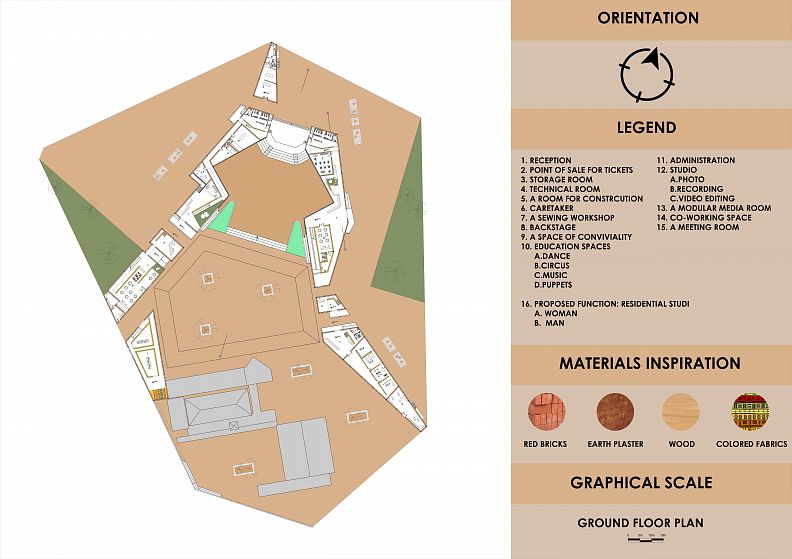Théâtre Populaire Ideal - The Temple

Project idea
Burkina Faso is a nation which comprise several religions and cultures, also, terrorism is moving from the north towards Ouagadougou. Consequently, in a world that suffers from a lack of commitment, the proposal is motivated by the idea of acting in favor of the metamorphosis of the terrain into an adequate zone of agreement between all faiths. The design, therefore, aims to celebrate social cohesion while sculpting a space that invites peace and spirituality. In parallel, I thought about complimenting the theater with the construction of the temple (this theater has always been considered the city temple). Moreover, in the study area, I wanted to guarantee the presence of the three main actors of social cohesion (sport, art and religion).
The project is a monolith that fits strongly in the land. At first glance, it looks like a barrier, but when you get closer, you can notice the colorful patterns through the wall openings. Indeed, it is a permeable wall through which you can see a multitude of colors. The viewer is therefore encouraged to enter the project where he finds very different spaces, thus all the sharp and cold geometry of the wall is managed by the harmony and warmth of the colored fabrics.
Moreover, these inhabited facades emanate from the site, and then merge into this site itself. In addition, to preserve the value of CDC complex, the closer they get closer to it, the thinner and shorter they get. Also, I made sure to preserve the exemplary shape of the theater by keeping its typology and centrality unchanged: Making it symmetrical on the inside but dynamic and asymmetrical on the outside.
Project description
To create zones for the city, and more specifically for local people, I erased the fence of the plot and created instead an envelope for the theater. It is a membrane that has a double purpose and a double function.
In the first place, it is an inhabited wall supporting shears providing access to the square at the center of the project. This square preserves the space that has always existed between the theater and the CDC complex and promotes the relationship between them. Its presence protects the green belt which better defines this space.
In the second place, to "re-plaster" the earth walls of the project, each year, local people dance on the facades of this temple. These walls play the role of a stage, they are changing by shape, height, depth, and function, as they serve the stage first, then the court, and finally the CDC.
Technical information
Being completely built by hand, the space becomes infused with human beings' energy. Moreover, red bricks reflect the strength of the community, each brick supports the next.
Annually, the facades made of bricks will be re-plastered by local people. This re-plastering ceremony is as much a cultural festival as it is a required task. Thereby, the community is encouraged to be part of remodeling this iconic building, so it will carry mud to the project from down the river.
Also, in the aisles of the temple, visitors are invited to expose their colored fabrics on the framed wood walls. They are made by people from different ethnicity and different religions.














